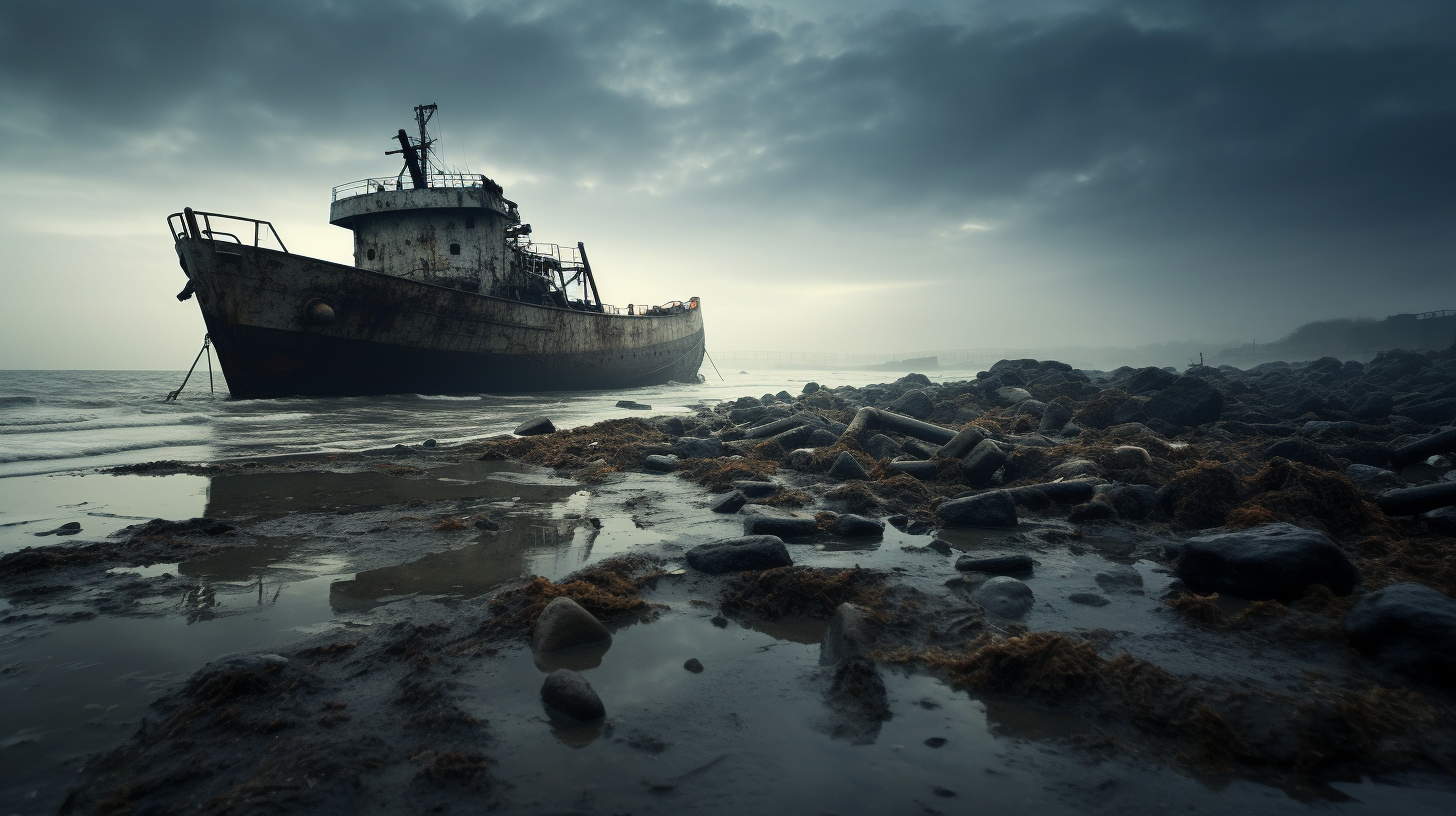The relentless surge of the sea levels is a visual testament to nature’s indomitable will over human constructs. This tale is not one of redemption or hope; it whispers the solemn story of Terra’s reclamation, where the sea both cradles and curses the earth’s most treasured possessions: its land and the multitude of lives it supports.
It begins with the creeping tides, which once gently kissed shores, now viciously gnaw at the edges of civilization. Coastal cities, once thriving with vibrancy and life, stand desolate as shells of their former selves; the sea had no mercy for the concrete brimming with dreams. Roads are submerged, buildings tilt and crumble, and piercing through the sound of the waves, the silence is profound—the silence of displaced communities, lost livelihoods, and a past that can never be reclaimed.
Consider the fate of Amsterdam, a city which once fought the tides with cunning engineering, now relents its battle in the face of nature’s overwhelming force. The artistic legacies housed within the Rijksmuseum are now memories entangled in algae and seaweed. ‘The Fury of the Tides’ has not just reclaimed the land, but it has drowned the rich heritage into obscurity.
Li Huan, a fisherman whose family has lived by the Yangtze River delta for generations, recounts the day when the sea breached the barriers and rushed in. ‘It was like the dragons of old had awakened, furious and insatiable, swallowing everything in its path’ he said, his voice barely above a whisper as he recollects the horror of that day.
Environmentalists have long sounded the alarm, clamoring for urgent action against climate change. But, what use is an alarm when the fire already rages? ‘Fury of the Tides’ paints a mournful painting of neglect; where warnings were dismissed, and procrastination was the chosen ally. Now, the reclamation serves as a brutal lesson in reactivity over proactivity—a costly mistake for all humankind.
If tales of submerged sanctuaries and drowned landmarks weren’t severe enough lessons, this narrative provides no solace. Over the horizon, one can barely make out the anemic skeletons of wind turbines, the last stand of a fallen army that once signified the shift to renewable energy. There’s irony in how these harbingers of hope now stand desolated amidst the victory of a rampaging ocean. The defeat is palpable in the rust that eats away at their proud blades.
The victims of this silent apocalypse vary from those with small stakes to larger-than-life figures. Hotels, homes, and businesses washed away, with economists arguing over the vanished billions and what such vanishing acts mean for the global market. But beyond numbers, lives have been uprooted, and dreams have been plundered by the saltwater conquering assault.
‘Fury of the Tides’ challenges us to peer into the engulfed abyss and recognize the cost of our inaction. There’s a muse in the mayhem—a siren’s call to remind us that what once was ‘tomorrow’s problem’ is today’s nightmare. The consequence of our global dalliance with excess emits no triumphant climax but rather a dampened whimper of loss.
Yet, the sun still rises, and the world turns. In the muted sunsets reflected on the engulfed skylines, the tides still dance with a melancholic grace, reclaiming one inch at a time, reminding us with their rhythmic sorrow that this saga is far from its final refrain.
